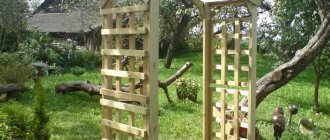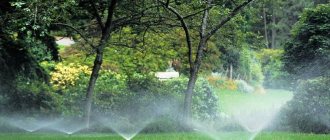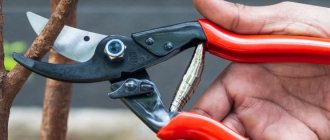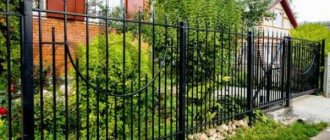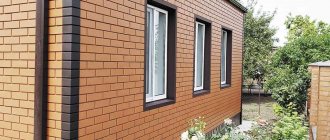It is known that you can grow a flower greenhouse or get a rich harvest without planting a single sprout or seed in the soil. This was made possible thanks to hydroponics. Hydroponics can most accurately be described as a soilless growing technology.
In the simplest sense, many amateur gardeners have encountered it when they planted bulbs in a container with water to force the feathers. But real hydroponics involves the use of special systems using nutrient solutions. Let's take a closer look at these systems.
What it is?
Hydroponic systems are an artificial set of conditions for cultivating plants outside the soil in substrates or on floating foundations.
Author of the book “Hydroponics for Everyone. “All about gardening at home” William Texier writes that the design of various hydroponic installations is similar, and always includes: a tank, pump, supports, supply and return hoses, a ditch or tray for seedlings. But there are many options for connecting and arranging these parts, and therefore there are many varieties of hydroponic installations.
Floating panels
In hydroponics you can grow cereal crops: barley, wheat, fodder plants. This is easy to do with floating panels. For this purpose, volumetric baths with solution are installed. They provide an aeration system. Foam boards are used as panels. For sowing, boxes with substrate are used; you can choose peat.
Holes for drawers are made in the slabs. Bathtubs are equipped with foam racks. Floating slabs are easy to move on water. To add the solution, install a pump. It is recommended to place thermometers in bathtubs.
The optimal solution temperature is 18-20 0C. The room can be maintained at temperatures up to 30 0C, humidity 70%. Ventilation is provided in the room. Sowing of cereals is carried out in the substrate. Young shoots appear after 5 days.
Low-volume hydroponic systems are made at home. Growers do not always purchase equipment from the manufacturer. Many people prefer to do the installation themselves. First, you need to determine the type of hydroponics and create a design for the system that is supposed to be assembled.
Types, varieties and features
In the “Guide to Growing Vegetables and Herbs Hydroponically,” based on the principle of water supply, two main types of hydroponic installations are distinguished:
- Active type. In these installations, the working solution is pumped through special pumps.
- Passive type. In such systems, pumps are not used to supply the nutrient solution; moisture is supplied only by capillary forces.
There are also combined type installations. This combines both options for supplying liquid to plants.
What type of hydroponic system would you use?
ActivePassive
Based on the type of solid substrate used, the following types of hydroponic systems are distinguished:
- Aggregate - an inorganic substrate is used: gravel, sand, expanded clay, crushed stone, synthetic agroperlite.
- Chemoponic - the substrate is substances of organic origin: peat, sawdust, coconut fiber, moss.
- Ionoponic – insoluble granular ion exchange resins are used.
- Aeroponic - there is no substrate, and the root system of the plant is placed in a chamber without access to light.
Kate Roberto's book, A Guide to Hydroponics, contains the most common classification of hydroponic systems today based on the technology used. Let's look at each type and its features in more detail.
Wick
This is the simplest passive type installation. You only need a pot with a substrate to secure the plant, as well as a reservoir with a nutrient solution from which a wick will be drawn to the substrate. Through this wick, moisture with nutrients under the action of capillary forces will rise to the roots of the plant.
Any twisted piece of fabric or rope with good moisture-conducting properties can be used as a wick. Any beginner can make such a system and grow his first plant using hydroponics.
Advantages:
- simplicity of design and assembly;
- minimum financial investment;
- reliability and durability: nothing to break.
Flaws:
- there is no saturation of the solution with oxygen;
- not suitable for large plants;
- relatively low growth rate compared to cultivation in active type systems.
Floating platform (or deep-sea culture) system
This is the simplest active type installation. Consists of an open reservoir with a nutrient solution with a connected compressor for aeration. Floating bases with holes for plant roots are installed on the surface of the solution. Or mesh trays are fixed to ensure free hanging of the root system. The roots directly receive everything they need from a nutrient solution enriched with oxygen.
Often such systems are used in the industrial cultivation of greens, where long pools with a mineral solution act as reservoirs. And beginners can assemble such a system on their own, having only an aquarium with a compress and a piece of foam plastic.
Advantages:
- the cheapest active installation, you can start with it when trying your hand at hydroponics;
- simplicity and reliability of design;
- high plant growth rate;
- a large tank provides the plants with everything they need for a long time;
- The setup is ideal for quickly growing succulent greens.
Flaws:
- the tank will have to be cleaned regularly to avoid root rot;
- you need to monitor the level of the solution so that it does not cover the root collars;
- the need to regularly replenish the reservoir with solution;
- This method is not suitable for large tall plants.
Installation of periodic flooding
It is often used in greenhouses and is distinguished by its versatility: any plants can be grown using this method. The design consists of 2 containers, united by a drainage tube and additionally equipped with a pump and timer.
The roots of the crops, placed in a container with a substrate, are filled with a nutrient medium using a pump when the timer turns on. After a while, the solution returns to the tank through the drainage.
Expert opinion
Torsunov Pavel Maksimovich
The activation of the timer is adjusted to suit the cultivation of different crops.
Advantages:
- does not require serious expenses;
- ease of operation: it works automatically, only configuration is required;
- good saturation with the solution and its accumulation in the substrate;
- quickly obtaining high yields.
Flaws:
- dependence on the power grid;
- if the circulating solution is not changed from time to time, microbial infection and root rot are possible;
- possibility of breakdowns and blockages: requires repair and service.
Drip distribution
A very popular system with a relatively simple design. When the timer is triggered, the nutrient medium is directed through the pump into the watering tubes with droppers, and slow watering is carried out.
Having passed the substrate and saturated the plants, the liquid returns through the drainage to the reservoir, so that, enriched with oxygen, it again goes to the droppers. This type of drip irrigation is called reversible. If watering is adjusted without excess, and everything is absorbed by the plants, they speak of a non-reversible drip system.
Advantages:
- effectiveness has been confirmed by use at large agricultural enterprises;
- ensures sufficient saturation of plants with moisture and essential minerals;
- aeration of the roots and solution is maintained.
Flaws:
- requires regular cleaning to prevent blockages;
- in circular media return systems there is a risk of molding of the root area;
- the tendency of small droppers to clog and break.
Nutrient layer
The operating principle is based on the application of gravity. It consists of two reservoirs: the lower one contains a fertilizing solution, which is continuously pumped to the bottom of the upper inclined reservoir. In the upper container, on stands without substrate, the seedlings are installed so that only the tips of the roots touch the bottom. It is they that are continuously fed by moisture, after which it flows down the slope into the lower main cube. And the circle resumes.
Advantages:
- the roots are effectively enriched with oxygen;
- compactness of the system;
- there is no need for substrates, which reduces costs;
- rapid growth of crops.
Flaws:
- dependence on the power grid;
- it is necessary to carefully monitor the operation of the pump, because if it stops, the roots dry out abruptly;
- Regular maintenance and cleaning is required.
Aeroponic
These are the most technologically advanced installations, where air serves as the medium for the roots. There is only one reservoir with the fertilizer mixture. Seedlings are planted at the top on a stand with holes for roots to emerge so that the roots hang freely in the air. The timer automatically turns on the pump, which delivers a solution rich in oxygen and minerals to the nozzles, where it irrigates the roots with small droplets.
Irrigation alternates with pauses, and the entire process is fully automated.
Advantages:
- the fastest growth and maturation rates;
- maximum nutrition and aeration;
- Saving space when placing seedlings in multiple layers, the aerosol will reach all the roots.
Flaws:
- dependence on the network: it is better to ensure an uninterrupted power supply system;
- frequent blockages of tubes and nozzle holes require careful regular cleaning;
- impossibility of using condensed nutrient solutions.
We create a hydroponic installation ourselves
In order to assemble a hydroponic system with your own hands, you do not need to be a highly qualified engineer. The simplest model will consist only of a container, a compressor with a sprayer, seats and an inert substrate. In some of the more complex systems there may be additional elements, but these are mostly minor.
In the article we will look at several types of different hydroponic systems, but first we will talk about the general rules that must be followed when purchasing components.
Rule 1
The tank intended for the nutrient solution must be made of a neutral material that is resistant to fertilizers and does not allow light to pass through.
Rule 2
The volume of the container should correspond to the number of plants and their “appetite”. Otherwise, you will have to refill the container too often.
Rule 3
Among inert substrates, you can choose mineral wool, expanded clay, coconut fiber, perlite, vermiculite or their complexes.
Current review of the best models
Let's look at the most popular installations for soilless growing with a description of the pros and cons based on customer reviews.
Modular germinator – aerogarden “Health Treasure×4”
This is a mini hydroponic installation for apartments, designed for germinating seeds. But by combining fertilizers, you can also grow fresh herbs. Consists of four three-liter modules with seed grids.
There are also additional slots for growing onions and small root vegetables. Air is forced into the containers by a compressor for aeration. The grains germinate very quickly: in a couple of days.
Costs on average 2500 rubles.
Advantages:
- low power consumption;
- affordable price;
- noiselessness;
- the ability to use modules individually or together.
Flaws:
- the solution is not supplied automatically;
- very small growing area.
Mini farm AquaPot Trio
The domestic installation is designed for growing vegetables, flowers and herbs. Consists of 4 combined containers (3 for planting crops and 1 for fertilizing solution). There are also options of 2 or 8 containers. But this kit is optimal.
It is equipped with a compressor and pump, and the operation is based on the deep-sea culture method. Can be used in the country and at home.
Costs about 6,750 rubles.
Advantages:
- substrate is included;
- the environment level is controlled automatically;
- low power consumption;
- possibility of combining containers.
Flaws:
- In reviews, buyers consider the product expensive.
Wilma Small4 system 11 liters
Simple and reliable installation. Includes 4 six liter pots. It works using the drip type. There is a timer for supplying liquid nutrient medium. Watering takes 15 minutes. After planting, watering is recommended every 6 hours, and then every 3 hours.
The tray capacity is 30 liters, and the solution should be updated weekly. The substrate can be coconut fiber, expanded clay, etc.
Price: 10050 rubles.
Advantages:
- Includes different droppers for substrate types;
- watering is automated.
Flaws:
- expensive;
- a full harvest only with finely dispersed substrate bases.
Dutch Aero Complex 1
Professional French hydroponic system, allowing on an area of 1 sq. meter to plant 60 seedlings. Consists of 12 modules. It works on the principle of aeroponics with irrigation nozzles, providing uniform nutrition and aeration.
Everything is done automatically, you just need to change the nutritional composition and control its quality.
You can buy it for about 46,000 rubles.
Advantages:
- suitable for professional agricultural technology;
- economical energy consumption;
- compactness and modular blocks.
Flaws:
- sensitivity to grid failures and power outages;
- high price.
GHE, Panda System Aero Box
Professional and compact mini farm for 40 seedlings. Consists of 8 modules for 5 plants. Allows you to grow commercial volumes of herbs and vegetables.
Combines drip irrigation and aeration. Has a compressor for aeration and a 100 W pump.
Costs on average about 32,000 rubles.
Advantages:
- automated watering and spraying;
- Compact and easy to use.
Flaws:
- network dependence;
- high price.
RainForest 2
The 36-sprout system allows you to take your hobby to a professional level. In the middle there is a compressor for aerating the environment where the root system is placed. The work combines the principle of deep-water culture with aeration.
Expanded clay substrate, liter of fertilizer and ph-metry kit included.
The price range is wide: from 26,800 rubles to 35,000 rubles, you need to choose.
Advantages:
- compactness;
- low energy consumption.
Flaws:
- network dependence;
- interruptions in the energy supply will quickly dry out and destroy the seedlings.
GHE, Ecogrower max
With this mini farm you can grow vegetables, berries, herbs and flowers. A compact complex with 6 pots can fully provide for family consumption. Based on the action of drip irrigation. The pump drips the medium to the roots.
If you purchase a central compressor, you can make an aeroponic system.
Prices in different online stores differ by a factor of 2: the range is from 15 to 30 thousand rubles.
Advantages:
- large volume of pots;
- compact dimensions;
- economical energy consumption;
- possibility of modification.
Flaws:
- expensive for such a number of seedlings.
GHE, Aeroflo 10
French system, available in different configurations: from 10 to 60 growing places. For non-professionals, 10 places are enough. It works on the principle of nutrient layers. The sprouts are placed in containers with an aerated medium flowing underneath.
The volume of aeration and solution supply are automated. The feeding fluid should be changed once every ten days. Fertilizers included.
Costs about 20-30 thousand rubles.
Advantages:
- cultivation automation;
- energy saving;
- easy installation and operation.
Flaws:
- network dependence;
- high price.
GHE, Aero Farm 3
Compact aeroponic system for 5 seedlings with a 45-liter tank. With its help, you can drive out seedlings, root cuttings and grow greens. You can expand the planting area by purchasing additional sections and components.
The compressor constantly supplies the roots with oxygen. The special material of the system inhibits the growth of algae on the walls of the tank.
The complex can be purchased at a price of 10,200 rubles.
Advantages:
- compact installation;
- versatility of agricultural technology;
- possibility of expanding the planting area;
- low energy consumption.
Flaws:
- network dependence;
- In case of power outages, the solution must be stirred to prevent the death of the plantings.
Mini complex GHE, Cutting Board 27
The best option for beginners in hydroponics for 27 seedlings. Suitable for growing herbs, vegetables and berries. It works on the principle of deep-water culture with additional aeration. Holds 13 liters of solution, which is intensively aerated by a 5-watt compressor. Due to the low power, it even works on battery and generator power.
You just need to monitor the acid-base balance and change the solution (about weekly).
You can buy it for 9362 rubles.
Advantages:
- simple maintenance;
- many places for landing;
- affordable price;
- Possibility of battery power supply during power outages.
Flaws:
- small diameter pots.
Drip irrigation system
It should be considered as temporary help for plants, especially when you are not at home. If assembled correctly, this system will be able to irrigate plants without your presence. Often, growers use drip irrigation to irrigate their pets grown on coconut or any other inert substrate.
Here's what you'll need to create a drip irrigation system:
- tank for nutrient solution (depending on the number of plants);
- two 16 mm main pipes made of durable plastic;
- microtubes;
- seals;
- microfittings;
- G-fitting;
- punch.
How to assemble drip irrigation:
- Make a hole in the tank for the main main pipe (seal with a sealant);
- Place lines from 16 mm pipes;
- Using a punch, make a hole for the microtube
- Next, the micropipe is connected using a microfitting to the main pipe;
- Droppers are installed;
- A pump should be placed in the tank;
- At the end of the line we install a drain valve.
You can assemble a drip irrigation system yourself. You won't have to look for components for a long time. Everything you need for assembly is in our store.
FAQ
Is acid-base balance so important?
Yes, pH shifts can quickly destroy plants: literally within a day. Therefore, ph-metry cannot be neglected even with the apparent well-being of the seedlings.
What is the optimal temperature for a nutrient solution?
A range of 18 to 23 degrees Celsius is ideal. Overheating of the solution leads to root rot, and sudden hypothermia leads to death.
How often should the fertilizer solution be changed?
It is better to replace it weekly or once every 10 days.
Is it necessary to keep the compressor on?
The compressor must never be switched off. The solution must be aerated around the clock.
How to protect the crop from excess fertilizers?
It's simple: before harvesting the fruits (a week in advance), you need to stop feeding the plants with fertilizers and place clean water in the reservoir. Flora Kleen also washes fruits well.
Benefits of growing plants hydroponically
The hydroponic growing method has many advantages:
- the growing process is cleaner because no land is used;
- nutrients go directly to the roots, so the plant does not need to build up a powerful root system - it spends all its energy on the development of the above-ground part and thanks to this it grows faster and produces greater yields;
- growing indoors helps avoid problems such as damage to plants by insect pests;
- you don’t have to worry about unsuitable weather conditions: rain, sweltering heat, scorching sun will not harm the plants or spoil the harvest, as happens when growing in open ground;
- The hydroponic method saves water and nutrients because they are consumed almost completely: everything is absorbed by plants and does not go into the ground.
What plants can be grown hydroponically?
The list of plants that can be grown hydroponically is long. We list the main crops that produce good yields with this method of breeding:
- greens (dill, parsley, basil, cilantro, lettuce, mint, etc.),
- onion,
- cucumbers,
- pepper,
- tomatoes,
- eggplants,
- garden strawberries,
- legumes, etc.
Many flower crops also grow well in hydroponics.
But crops that form tubers and root vegetables (potatoes, beets, carrots, etc.) are not recommended to be grown using hydroponics, because If watered incorrectly, their root system begins to rot.

